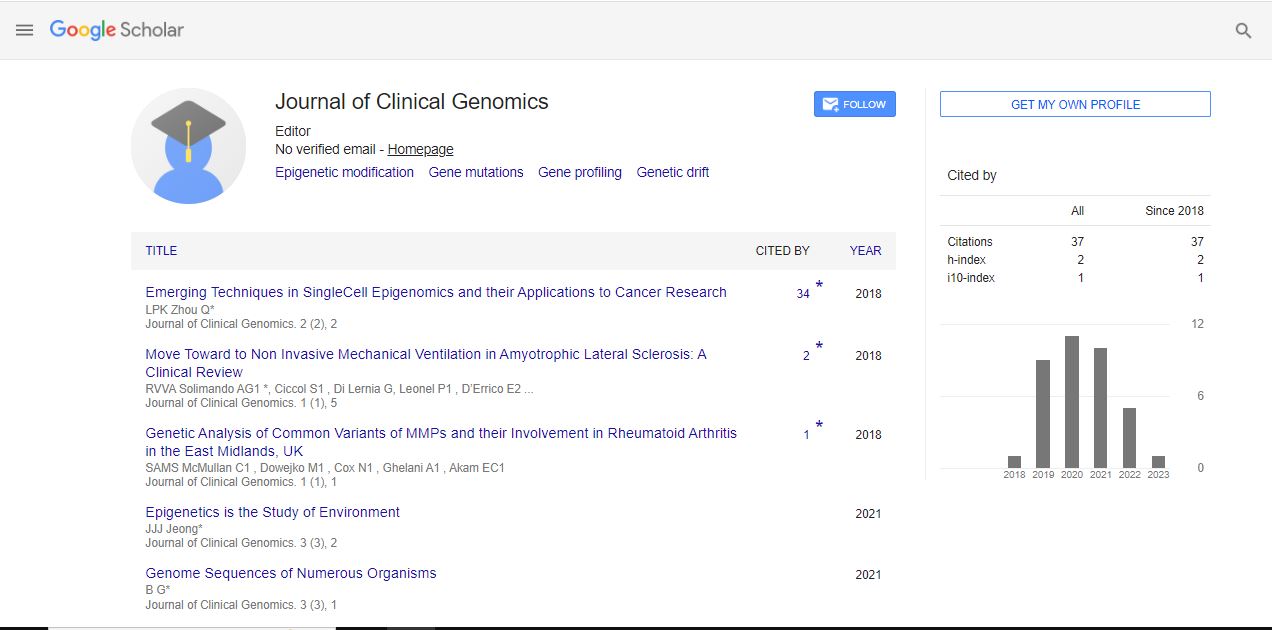Commentary, J Chromatography Res Vol: 6 Issue: 2
Gas Chromatography: Principles, Applications, and Advancements
Bismarck Daniel*
1Department of Chemistry, University of Vienna, Vienna, Austria
*Corresponding Author: Bismarck Daniel,
Department of Chemistry, University of
Vienna, Vienna, Austria
E-mail: daniel.b@gmail.com
Received date: 02 June, 2023, Manuscript No. JCGR-23-107799;
Editor assigned date: 05 June, 2023, PreQC No. JCGR-23-107799 (PQ);
Reviewed date: 19 June, 2023, QC No. JCGR-23-107799;
Revised date: 26 June, 2023, Manuscript No. JCGR-23-107799 (R);
Published date: 06 July, 2023, DOI: 10.4172/JCGR.1000062.
Citation: Daniel B (2023) Gas Chromatography: Principles, Applications, and Advancements. J Chromatography Res 6:2.
Description
Gas Chromatography (GC) is a widely used analytical technique that enables the separation, identification, and quantification of complex mixtures of volatile compounds. Since its creation in the 1950’s, gas chromatography has evolved into a powerful tool for various scientific disciplines, including chemistry, biochemistry, environmental analysis, forensic science, and the pharmaceutical industry.
Principles of gas chromatography
Gas chromatography operates on the principle of differential organizing of compounds between a stationary phase and a mobile phase. The process involves the following main steps:
Sample injection: The sample provide in liquid or gas form, it is injected into the gas chromatograph. It can be introduced through various techniques, such as split injection, split less injection, oncolumn injection, or headspace sampling, depending on the nature of the sample and the desired analysis.
Stationary phase: The stationary phase is typically a coated layer on the inner surface of a capillary column or a packed column within a temperature-controlled heat. It can be a solid material (for example silica gel, alumina) or a liquid phase immobilized on a solid support.
Mobile phase: The mobile phase, known as the carrier gas, it is inactive and carries the sample through the column. Common carrier gases include helium, hydrogen, and nitrogen. The transmission selection gas impacts the efficiency and speed of the separation.
Separation process: As the carrier gas moves the sample through the column, the different compounds in the mixture interact differently with the stationary phase. Compounds with higher affinity for the stationary phase require more time interacting with it, leading to slower migration through the column, while compounds with lower affinity move more rapidly.
Detection: As the separated compound leaves the column, they pass through a detector, which measures their concentration. Various detectors, such as Flame Ionization Detectors (FID), Thermal Conductivity Detectors (TCD), Electron Capture Detectors (ECD), and Mass Spectrometry Detectors (MS), can be used based on the type of analysis required.
Applications of gas chromatography
Environmental analysis: Gas chromatography plays an important role in environmental monitoring, enabling the analysis of air, water, and soil samples for pollutants, Volatile Organic Compounds (VOCs), pesticides, and other contaminants.
Petrochemical industry: GC is widely used in the petrochemical industry to analyze Crude petroleum, refined products, and natural gas, providing essential information for process optimization and quality control.
Petrochemical industry: GC is widely used in the petrochemical industry to analyze Crude petroleum, refined products, and natural gas, providing essential information for process optimization and quality control.
Food and beverage analysis: GC is utilized to detect and quantify enhancing substances, additives, and contaminants in food and beverages, ensuring product quality and safety.
Pharmaceutical analysis: Gas chromatography is employed in pharmaceutical study and quality control to analyze drug compounds, raw materials, and final products.
Environmental emissions testing: GC is utilized to monitor emissions from industrial processes and vehicle exhausts, ensuring compliance with environmental regulations.
Advancements in gas chromatography
Gas chromatography has experienced significant advancements over the years, resulting in improved efficiency, sensitivity, and efficiency:
Capillary columns: The advent of capillary columns with a smaller inner diameter revolutionized GC. Capillary columns provide higher resolution and analysis, allowing the separation of complex mixtures with greater accuracy.
High-resolution detectors: Modern detectors, such as Gas Chromatography Mass Spectrometry (GC-MS), provide exceptional sensitivity and selectivity, enabling the identification of elements of traceability and combinations that are complicated.
Multidimensional Gas Chromatography (MDGC): MDGC involves the use of multiple columns and switching valves, allowing further separation of compounds with similar retention times. This technique significantly enhances resolution and it is particularly useful for difficult samples.
 Spanish
Spanish  Chinese
Chinese  Russian
Russian  German
German  French
French  Japanese
Japanese  Portuguese
Portuguese  Hindi
Hindi 